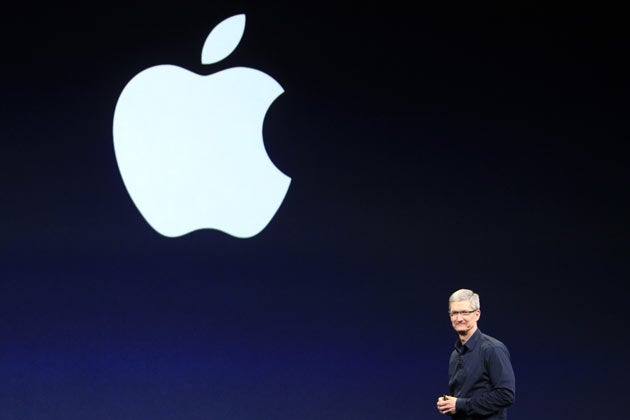Apple told to unlock iPhone by US: How much can the Government see of what's on people's phones?
The big question: As the US government requests that Apple break into its own phones, how safe are we now?

Your support helps us to tell the story
From reproductive rights to climate change to Big Tech, The Independent is on the ground when the story is developing. Whether it's investigating the financials of Elon Musk's pro-Trump PAC or producing our latest documentary, 'The A Word', which shines a light on the American women fighting for reproductive rights, we know how important it is to parse out the facts from the messaging.
At such a critical moment in US history, we need reporters on the ground. Your donation allows us to keep sending journalists to speak to both sides of the story.
The Independent is trusted by Americans across the entire political spectrum. And unlike many other quality news outlets, we choose not to lock Americans out of our reporting and analysis with paywalls. We believe quality journalism should be available to everyone, paid for by those who can afford it.
Your support makes all the difference.Why are we asking this question now?
The US government has told Apple that it must make its phones hackable, so that the FBI can get access to them. The ruling related specifically to the case of the San Bernardino shooters, but some are worried that the effects could be far more widespread.
How much can they see without special access?
Leaks have shown that the government appears to be able to track a huge range of information from texts, online browsing and other communication like email.
But there are some parts of their understanding that are lacking. Encryption technology allows phones to be locked and messages to be hidden, so that technologies like Apple’s iMessage and FaceTime can’t be looked in on by someone sitting in the middle.
Some privacy campaigners have pointed out that people who are careful about their security should perhaps be encouraged by the request, since it appears to show that the government doesn’t yet have full access to phones or messages sent on them.
Why does the FBI want access to the phone?
The FBI have been searching through the records of the San Bernardino killers in an attempt to find out how the attack was planned and whether it was undertaken with help from others.
Everything inside of it is encrypted, meaning that it’s not possible to see it without unlocking it.
Does that mean that Apple supports privacy for terrorists?
The company has made very clear that it doesn’t have any sympathy for terrorists, and that it is on the side of the FBI. But it says that it doesn’t agree that unlocking the phone would help.
Tim Cook stressed in a letter that the company has been advising the FBI on how best to explore the information available to them, and has even made engineers available to lend a hand.
So why won’t they unlock it?
Apple’s argument revolves around everyone but the terrorists — its customers and the company itself.
If it were to unlock the phone, it would have to create a special version of its operating system that was intentionally not secure, and then load it onto the relevant phone. That could then be used on any phone, or at least any iPhone 5c.
The company worries that if it were to do that then the special software would make its way elsewhere, too. It also said that doing so would be a dangerous precedent, potentially leading the company to be forced to weaken its encryption in other situations.
Where does it go from here?
Apple has said that it will not comply with the order, and that it will fight it through the legal system. It seems clear that the US government is unlikely to back down.
That could mean that the dispute goes all the way to the US supreme court.
Join our commenting forum
Join thought-provoking conversations, follow other Independent readers and see their replies
Comments